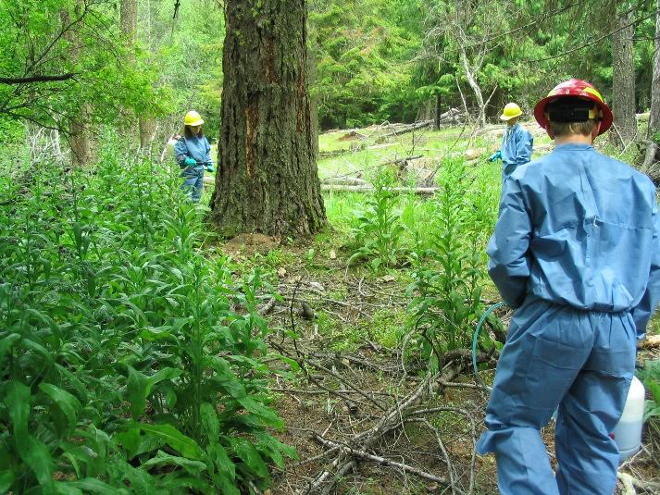|
IPNF to go after noxious weeds |
|
May 21, 2017 |
 |
The Idaho Panhandle National Forests will be
treating noxious weeds on National Forest System
lands as part of an integrated pest management
program that includes mechanical treatment,
seeding/fertilizing of competitive native
grasses, biological controls, and chemical
treatment.
Treatments will occur from May through October
2017 on roads, trails, trail heads, and
administrative sites located throughout the
districts. For specific areas considered for
treatment, please contact the applicable ranger
station on the Idaho Panhandle National Forests.
Treatment needs are determined by noxious weed
surveys. Herbicides approved for use include
2,4-D, Aminopyralid, Clopyralid, Metsulfuron
Methyl, Triclopyr, Chlorsulphuron, Glyphosate,
Dicamba and Picloram. The use of these
herbicides may vary by district.
The most common targeted weeds inlcude:
houndstongue, spotted knapweed, meadow hawkweed,
orange hawkweed, St. Johnswort, Canada thistle,
bull thistle, rush skeletonweed, dalmatian
toadflax, yellow toadflax, leafy spurge,
blueweed (vipers’ bugloss), common bugloss,
Scotch broom, multiflora rose, Japanese
knotweed, tansy ragwort, poison hemlock and
common tansy.
For further information on noxious weeds,
click here. |
|
Questions or comments about this
article?
Click here to e-mail! |
|
|
|
|

